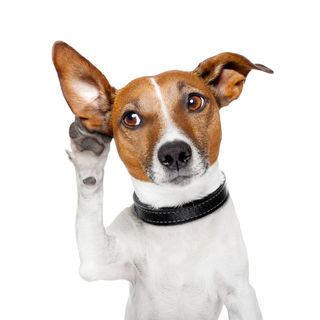Media
Technology-Mediated Audience Appreciation
The noise may be deafening, but “LET’S GO TEAM!”
Posted August 7, 2019

Applause is defined as the clapping of hands together to signify approval—a distinctly human behavior with a very long history.
Today, “Let’s hear a big round of applause,” “Give it up," or “Put your hands together!” are widely recognized contagious signals of approval that we take for granted. Applause is a cultural phenomenon, and the rules that govern it are changing. For one thing, audiences now interact more by using technology. The ways we express our approval or disapproval is evolving.
The technology of applause
"Nielsen families" used to keep physical diaries in a system of rating television shows. Today, media viewership is electronically sampled so advertisers can instantly gauge who is watching (or skipping) their commercials.
Throughout history, instigators prompted audiences to clap along as they enthusiastically promoted a particular show or cause. Today, studio audiences are still prompted by an “applause” lamp to cue us when to show our approval. Ever since the early days of television, sound editors used a “Laff Box” with audience recordings varying from gentle chuckles to full-out guffaws. This “canned laughter” was not for the actors, who perform only for cameras. No, fake applause is for us, the audience. Must we hear others laughing to recognize that something is funny? Does hearing artificial applause prime our own appreciation responses, or give us permission to laugh along?
Audiences used to hold up lighters at a poignant moment of a music concert. Today, we hold up our glowing cellphones. Technology augments the ways we show our appreciation. (Don’t forget to “like” or “follow” this blog!) Social media has created an entire industry of thumbs-up “liking” and “following.” For good or bad, we live in a time of instantaneous feedback, user-ratings, and reviews—the modern equivalents of clapping or booing.
The crowd is getting louder
Inventors have created apps that send your voice to an amplified speaker. Have you noticed that sports and concert audiences are getting louder?
The applauding (and screaming) fans at Arrowhead Stadium for one Kansas City Chiefs game was measured at 142 decibels. That is painfully loud noise that can hurt your hearing. If Chiefs fans can reach 142 dB unassisted, imagine how loud the technology-boosted crowd noise of the future may become. As amplified cellphone apps become more common, it may encourage ever-louder crowd noise. Fans better bring along earplugs, or perhaps some tech-assisted sound-dampening headphones.
Thankfully, technology also gave us The Clapper, a device that detects hands clapping to turn on and off electrical appliances. How ingenious: We can use technology so our applause turns on more technology. What’s next? Clap-Off.
Fans will continue to shout, hoot, stomp, whistle, and scream to accompany their applause. Bring out the thunderous sounds of many hands clapping. Enjoy the revelry. Let’s just hope everyone doesn’t start using the megaphone app for ever-more-deafening crowd noise in the future.
References
*The Clapper - US Patent #5493618


